Dates 7 Nov 2004 – 23 Dec 2004 | Result Coalition victory | |
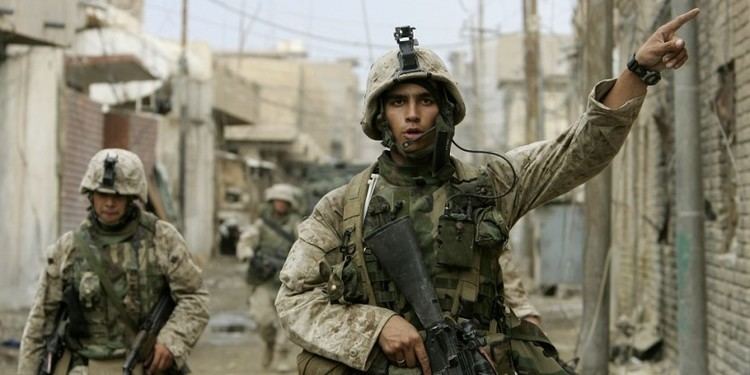 | ||
American95 killed, 560 wounded(54 killed and 425 wounded from 7 to 16 November) Iraqi8 killed, 43 wounded British4 killed, 10 woundedTotal 107 killed, 613 wounded 1,200–1,500 killed1,500 captured Combatants Iraq, United States of America, United Kingdom, Jamaat Ansar al‑Sunna, Army of the Men of the Naqshba Similar Iraq War, First Battle of Fallujah, Operation Phantom Thunder, Battle of Fallujah (2016), Iraqi insurgency | ||
Second battle of fallujah documentary operation phantom fury
The Second Battle of Fallujah—code-named Operation Al-Fajr (Arabic: الفجر "the dawn") and Operation Phantom Fury—was a joint American, Iraqi, and British offensive in November and December 2004, considered the highest point of conflict in Fallujah during the Iraq War. It was led by the U.S. Marine Corps against the Iraqi insurgency stronghold in the city of Fallujah and was authorized by the U.S.-appointed Iraqi Interim Government. The U.S. military called it "some of the heaviest urban combat U.S. Marines have been involved in since the Battle of Huế City in Vietnam in 1968."
Contents
- Second battle of fallujah documentary operation phantom fury
- Army second battle of fallujah documentary 2015
- Background
- Coalition forces
- Insurgent forces
- Civilian presence
- Diversion
- Attack
- Recognition
- Aftermath
- American forces
- Iraqi forces
- British forces
- Controversies
- Documentaries
- Games
- Music
- References
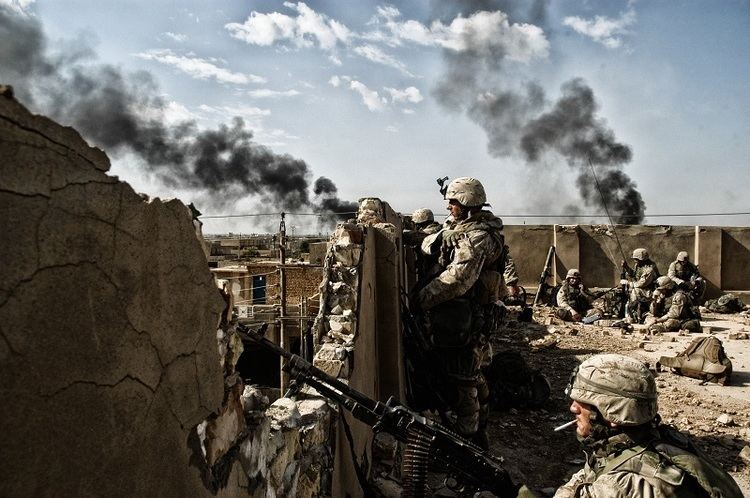
This operation was the second major operation in Fallujah. Earlier, in April 2004, coalition forces fought the First Battle of Fallujah in order to capture or kill insurgent elements considered responsible for the deaths of a Blackwater Security team. When coalition forces fought into the center of the city, the Iraqi government requested that the city's control be transferred to an Iraqi-run local security force, which then began stockpiling weapons and building complex defenses across the city through mid-2004. The second battle was the bloodiest battle of the entire Iraq War, and is notable for being the first major engagement of the Iraq War fought solely against insurgents rather than the forces of the former Ba'athist Iraqi government, which was deposed in 2003.
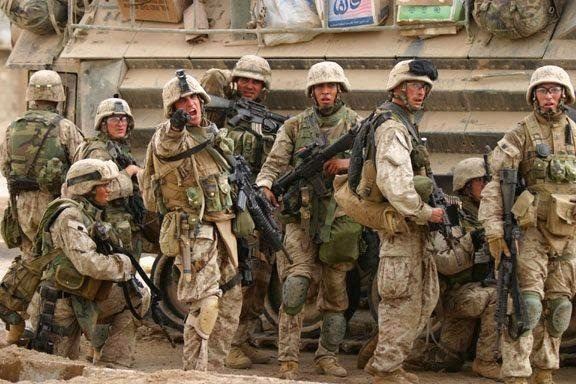
Army second battle of fallujah documentary 2015
Background
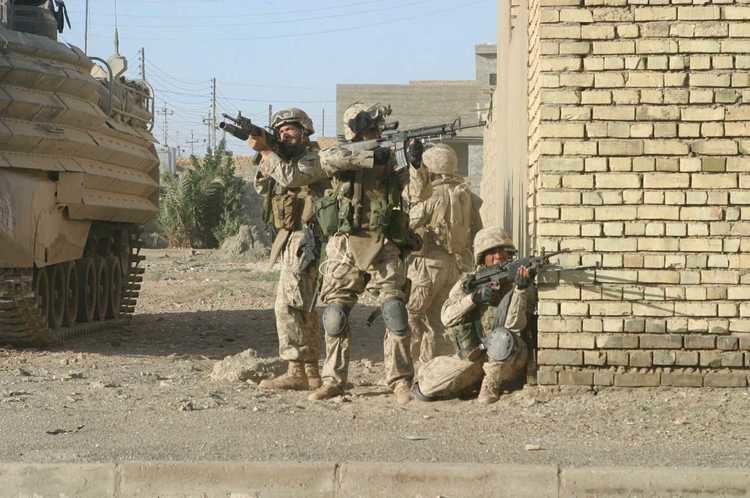
In February 2004, control of Fallujah and the surrounding area in the Al-Anbar province was transferred from the U.S. 82nd Airborne Division to the 1st Marine Division. Shortly afterward, on 31 March 2004, four American private military contractors from Blackwater USA were ambushed and killed in the city. Images of their mutilated bodies were broadcast around the world.

Within days, U.S. Marine Corps forces launched Operation Vigilant Resolve (4 April 2004) to take back control of the city from insurgent forces. On 28 April 2004, Operation Vigilant Resolve ended with an agreement where the local population was ordered to keep the insurgents out of the city. The Fallujah Brigade, composed of local Iraqis under the command of a former Ba'athist officer named Muhammed Latif, took control of the city.
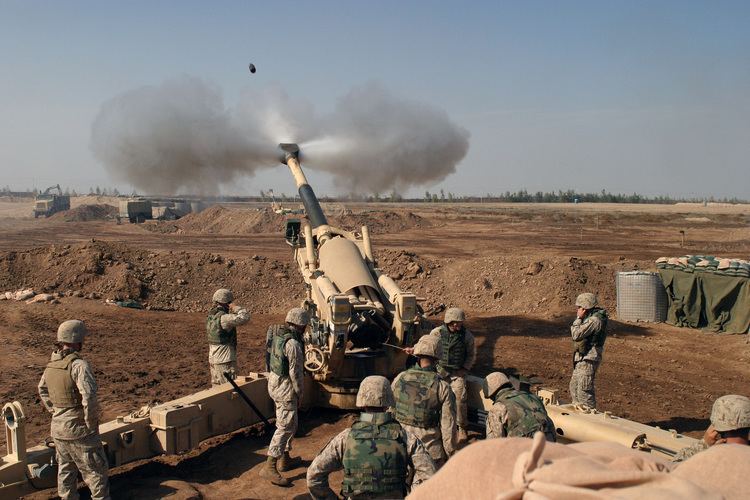
Insurgent strength and control began to grow to such an extent that by 24 September 2004, a senior U.S. official told ABC News that catching Abu Musab al-Zarqawi, said to be in Fallujah, was now "the highest priority," and estimated his troops at 5,000 men, mostly non-Iraqis.
Coalition forces

Before beginning their attack, U.S. and Iraqi forces had established checkpoints around the city to prevent anyone from entering the city, and to intercept insurgents attempting to flee.
In addition, overhead imagery was used to prepare maps of the city for use by the attackers. American units were augmented by Iraqi interpreters to assist them in the planned fight. After weeks of withstanding air strikes and artillery bombardment, the militants holed up in the city appeared to be vulnerable to direct attack.
U.S., Iraqi and British forces totaled about 13,500. The U.S. had gathered some 6,500 Marines and 1,500 Army soldiers that would take part in the assault with about 2,500 Navy personnel in operational and support roles. U.S. troops were grouped in two Regimental Combat Teams: Regimental Combat Team 1 comprised 3rd Battalion/1st Marines, 3rd Battalion/5th Marines, Naval Mobile Construction Battalion 4 and 23 (Seabees) as well as the U.S. Army's 2nd Battalion/7th Cavalry. Regimental Combat Team 7 comprised the 1st Battalion/8th Marines, 1st Battalion/3rd Marines, the U.S. Army's 2nd Battalion/2nd Infantry,2nd Battalion/12th Cavalry and 1st battalion 6th field artillery. About 2,000 Iraqi troops assisted with the assault. All were supported by aircraft U.S. Marine and U.S. Army artillery battalions and USSOCOM Sniper Elements.
The 850-strong 1st Battalion of the Black Watch was ordered to help U.S. and Iraqi forces with the encirclement of Fallujah. As part of Task Force Black, D Squadron of the British SAS prepared to take part in the operation, but due to British political nervousness about the possible scale of casualties stopped any direct UK involvement in the ground battle.
Insurgent forces
In April, Fallujah was defended by about 500 "hardcore" and 1,000+ "part time" insurgents. By November, it was estimated that the numbers had doubled. Another estimate put the number of insurgents at 3,000; however, a number of insurgent leaders escaped before the attack.
Fallujah was occupied by virtually every insurgent group in Iraq: al-Qaeda in Iraq (AQI), Islamic Army of Iraq (IAI), Ansar al-Sunna, Army of Mohammed (AOM), the Army of the Mujahedeen and the Secret Islamic Army of Iraq. Three groups, (AQI, IAI and the National Islamic Army (1920 Revolution Brigade)) had their nationwide headquarters in Fallujah. An estimated 2,000 insurgents were from the Army of Mohammed (made up of ex Fedayeen Saddam fighters), Ansar al-Sunna and various smaller Iraqi groups.
The Iraqi insurgents and foreign mujahadeen present in the city prepared fortified defenses in advance of the anticipated attack. They dug tunnels, trenches, prepared spider holes, and built and hid a wide variety of IEDs. In some locations they filled the interiors of darkened homes with large numbers of propane bottles, large drums of gasoline, and ordnance, all wired to a remote trigger that could be set off by an insurgent when troops entered the building. They blocked streets with Jersey barriers and even emplaced them within homes to create strong points behind which they could attack unsuspecting troops entering the building. Insurgents were equipped with a variety of advanced small arms, and had captured a variety of U.S. armament, including M14s, M16s, body armor, uniforms and helmets.
They booby-trapped buildings and vehicles, including wiring doors and windows to grenades and other ordnance. Anticipating U.S. tactics to seize the roof of high buildings, they bricked up stairwells to the roofs of many buildings, creating paths into prepared fields of fire which they hoped the troops would enter.
Intelligence briefings given prior to battle reported that coalition forces would encounter Chechen, Filipino, Saudi, Libyan, and Syrian combatants, as well as native Iraqis.
Civilian presence
Meanwhile, most of Fallujah's civilian population fled the city, which greatly reduced the potential for noncombatant casualties. U.S. military officials estimated that 70–90% of the 300,000 civilians in the city fled before the attack.
Diversion
With Navy SEAL and Marine Recon Snipers providing reconnaissance and target marking on the city perimeter, ground operations began on the night of 7 November 2004. Attacking from the west and south, the Iraqi 36th Commando Battalion with their U.S. Army Special Forces advisers, SEAL Sniper Task Elements from Naval Special Warfare Task Group Central and the U.S. Marine Corps Scout Platoon, 1st and 2nd Platoon, Charlie Company, 1st Battalion 9th Infantry Regiment (Manchu), 2nd Brigade Combat Team, 2nd Infantry Division (U.S. Army), 3rd Platoon Alpha Company 2/72nd Tank Battalion (U.S. Army), and 3rd Light Armored Reconnaissance Battalion, reinforced by Bravo Company from the Marine Corps Reserve's 1st Battalion, 23rd Regiment, and supported by Combat Service Support Company 113, from Combat Service Support Battalion 1, captured Fallujah General Hospital, Blackwater Bridge, ING building, and villages opposite of the Euphrates River along Fallujah's western edge. Troops from the 1st Battalion, 3rd Marines fired 81mm mortars in an operation in south Fallujah. The same unit, operating under the command of the U.S. Army III Corps, then moved to the western approaches to the city and secured the Jurf Kas Sukr Bridge. These initial attacks, however, were a diversion intended to distract and confuse the insurgents holding the city.
Attack
After Navy Seabees from I MEF Engineer Group (MEG) interrupted and disabled electrical power at two substations located just northeast and northwest of the city, two Marine Regimental Combat Teams, Regimental Combat Team 1 (RCT-1) and Regimental Combat Team 7 (RCT-7) launched an attack along the northern edge of the city. They were joined by two U.S. Army heavy battalion-sized units, the 2nd Battalion, 7th Cavalry Regiment, and Task Force 2nd Battalion, 2nd Infantry Regiment (Mechanized). These two battalions were followed by four infantry battalions who were tasked with clearing the remaining buildings. The Army's mechanized Second Brigade, First Cavalry Division, augmented by the Marines' Second Reconnaissance Battalion and A. Co 1st Battalion, 5th Infantry Regiment, was tasked to infiltrate the city and destroy any fleeing enemy forces. The British Army's 1st Battalion, The Black Watch, patrolled the main highways to the east. The RCTs were augmented by three 6-man SEAL Sniper Teams from Naval Special Warfare Task Group-Central and one platoon from 1st Recon, who provided advance reconnaissance in the city, Joint Terminal Aircraft Control (JTACS) and unilateral overwatch throughout the operation. The United States Air Force provided close air support for the ground offensive, employing F-15 Strike Eagles, F-16 Fighting Falcons, A-10 Thunderbolt IIs, B-52 Strato fortresses, and AC-130 gunships to carry out close-quarter precision airstrikes against enemy strongholds within the city. The Air Force also employed MQ-1 Predator unmanned aerial vehicles for reconnaissance and precision strikes, and the U-2 Dragon Lady high-altitude reconnaissance aircraft for intelligence collection, surveillance and reconnaissance before, during, and after the battle.
The six battalions of Army, Marine and Iraqi forces, aided by the USMC and SEAL Sniper and JTAC elements pre-fire operations, moved into the city under the cover of darkness; and once aligned with the reconnaissance elements, began the assault in the early hours of 8 November 2004, preceded by an intense artillery barrage and air attack. This was followed by an attack on the main train station, which was then used as a staging point for follow-on forces. By that afternoon, under the protection of intense air cover, Marines entered the Hay Naib al-Dubat and al-Naziza districts. The Marines were followed by the Navy Seabees of NMCB 4 and NMCB 23 who bulldozed the streets clear of debris from the bombardment that morning. The Seabees used armored bulldozers to plow the streets while remaining safe and protected from enemy fire. Shortly after nightfall on 9 November 2004, Marines had reportedly reached Phase Line Fran at Highway 10 in the center of the city.
While most of the fighting subsided by 13 November 2004, U.S. Marines and Special Operations Forces continued to face determined isolated resistance from insurgents hidden throughout the city. By 16 November 2004, after nine days of fighting, the Marine command described the action as mopping up pockets of resistance. Sporadic fighting continued until 23 December 2004.
By late January 2005, news reports indicated U.S. combat units were leaving the area, and were assisting the local population in returning to the now heavily-damaged city.
Recognition
The U.S. Army's Task Force 2nd Battalion, 2nd Infantry Regiment, 1st Infantry Division and Naval Special Warfare Task Group-Central was awarded the Presidential Unit Citation for actions during the battle. Additionally, Operation Phantom Fury yielded two nominees for the Medal of Honor. Staff Sergeant David Bellavia of the Army's Task Force 2-2 Infantry, one of the two, was eventually awarded the Silver Star instead. The other, Sergeant Rafael Peralta of 1st Battalion, 3rd Marines, was awarded the Navy Cross. Three other Marines were awarded the Navy Cross: First Sergeant Bradley Kasal of 3rd Battalion, 1st Marines, Staff Sergeant Aubrey McDade of Bravo Co, 1st Battalion 8th Marines, and Corporal Dominic Esquibel of H&S Company, Scout Sniper Platoon, 1st Battalion 8th Marines. Corporal Esquibel refused the award, citing "personal reasons".
Aftermath
The battle proved to be the bloodiest of the war and the bloodiest battle involving American troops since the Vietnam War. Comparisons with the Battle of Hue City and the Pacific campaign of World War II were made. Coalition forces suffered a total of 107 killed and 613 wounded during Operation Phantom Fury. U.S. forces had 54 killed and 425 wounded in the initial attack in November. By 23 December when the operation was officially concluded, the casualty number had risen to 95 killed and 560 wounded. British forces had 4 killed and 10 wounded in two separate attacks in the outskirts of Fallujah. Iraqi forces suffered 8 killed and 43 wounded. Estimates of insurgent casualties are complicated by a lack of official figures. Most estimates place the number of insurgents killed at around 1,200 to 1,500, with some estimations as high as over 2,000 killed. Coalition forces also captured approximately 1,500 insurgents during the operation. The Red Cross estimated directly following the battle that some 800 civilians had been killed during the offensive.
The 1st Marine Division fired a total of 5,685 high-explosive 155mm artillery rounds during the battle. The 3rd Marine Air Wing (aviation assets only) expended 318 precision bombs, 391 rockets and missiles, and 93,000 machine gun and cannon rounds.
Fallujah suffered extensive damage to residences, mosques, city services, and businesses. The city, once referred to as the "City of Mosques", had over 200 pre-battle mosques of which 60 or so were destroyed in the fighting. Many of these mosques had been used as arms caches and weapon strongpoints by Islamist forces. Of the roughly 50,000 buildings in Fallujah, between 7,000 and 10,000 were estimated to have been destroyed in the offensive and from half to two-thirds of the remaining buildings had notable damage.
While pre-offensive inhabitant figures are unreliable, the nominal population was assumed to have been 200,000–350,000. One report states that both offensives, Operation Vigilant Resolve and Operation Phantom Fury, created 200,000 internally displaced persons who are still living elsewhere in Iraq. While damage to mosques was heavy, coalition forces reported that 66 out of the city's 133 mosques had been found to be holding significant amounts of insurgent weaponry.
In mid-December, residents were allowed to return after undergoing biometric identification, provided they wore their ID cards all the time. Reconstruction progressed slowly and mainly consisted of clearing rubble from heavily-damaged areas and reestablishing basic utilities. Only 10% of the pre-offensive inhabitants had returned as of mid-January, and only 30% as of the end of March 2005.
Nevertheless, the battle proved to be less than the decisive engagement that the U.S. military had hoped for. Some of the nonlocal insurgents, along with Zarqawi, were believed to have fled before the military assault, leaving mostly local militants behind. Subsequent U.S. military operations against insurgent positions were ineffective at drawing out insurgents into another open battle, and by September 2006, the situation had deteriorated to the point that the Al-Anbar province that contained Fallujah was reported to be in total insurgent control by the U.S. Marine Corps, with the exception of only pacified Fallujah, but now with an insurgent-plagued Ramadi.
After the U.S. military operation of November 2004, the number of insurgent attacks gradually increased in and around the city, and although news reports were often few and far between, several reports of IED attacks on Iraqi troops were reported in the press. Most notable of these attacks was a suicide car bomb attack on 23 June 2005 on a convoy that killed 6 Marines. Thirteen other Marines were injured in the attack. However, fourteen months later insurgents were again able to operate in large numbers.
A third push was mounted from September 2006 and lasted until mid-January 2007. Tactics developed in what has been called the "Third Battle of Fallujah," when applied on a larger scale in Ramadi and the surrounding area, led to what became known as "the Great Sunni Awakening." After four years of bitter fighting, Fallujah was turned over to the Iraqi Forces and the Iraqi Provincial Authority during the autumn of 2007.
Al Qaeda-linked Sunni insurgents from the Islamic State in Iraq and the Levant subsequently took over Fallujah and parts of Ramadi in late 2013 and was reclaimed by the Iraqi Army and Special Operations Units in June 2016.
American forces
Regimental Combat Team 1 (RCT-1) built around the 1st Marine Regiment:
Regimental Combat Team 7 (RCT-7) built around the 7th Marine Regiment:
2nd Brigade, 1st Cavalry Division (U.S. Army)
1st Squadron, 124th Cavalry, 36th Infantry Division (U.S. Army)
CROWS Team One
United States Air Forces Central Command (U.S. Air Force)
U.S. Special Operations Command (embedded)
Iraqi forces
British forces
Controversies
Despite the Coalition success, the battle was not without controversy. A number of allegations have been made regarding the United States' armed intervention. For example, a documentary entitled Fallujah, The Hidden Massacre stated that the U.S. forces used white phosphorus as a weapon against civilians. The U.S. military maintains that white phosphorus was not used against civilians, but has confirmed its use as an incendiary weapon against enemy combatants. According to the Organization for the Prohibition of Chemical Weapons, white phosphorus is permitted as an incendiary weapon.
The use of phosphorus was especially controversial in the United Kingdom because British forces were involved in the battle. British law prohibits British forces being present in a theatre in which phosphorus is used as an anti-personnel weapon, whether or not the targets are military personnel.
On 16 November 2004, NBC News aired footage that showed a U.S. Marine killing a wounded Iraqi fighter. In this video, the Marine was heard saying that the Iraqi was "playing possum". NCIS investigators later determined that the Marine was acting in self-defense. The AP news agency reported that military-age males attempting to flee the city were turned back by the U.S. military.
